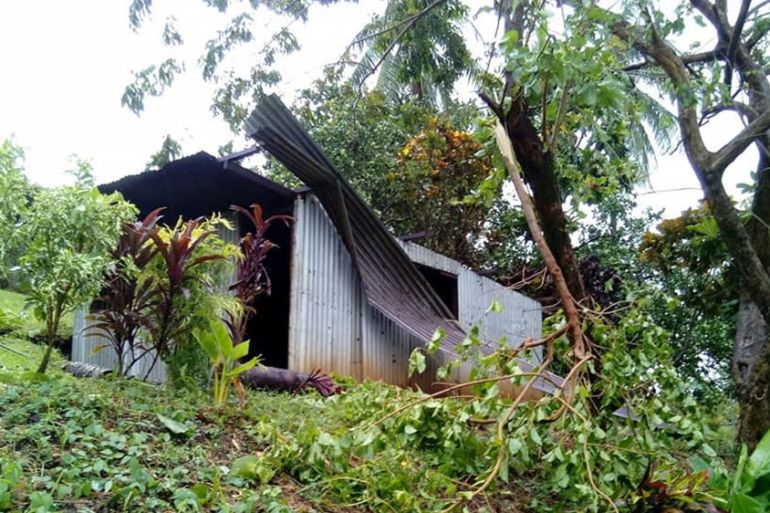Tropical Cyclone Hola sets its sights on New Zealand
The North Island braces for strong winds, heavy rain and coastal inundation.

After killing one person and seriously injuring two others on Vanuatu, Tropical Cyclone Hola is now heading towards New Zealand.
The North Island is bracing for damaging winds, torrential rain and coastal inundation.
Keep reading
list of 4 itemsWorld’s coral reefs face global bleaching crisis
Why is Germany maintaining economic ties with China?
Australia’s Great Barrier Reef suffers worst bleaching on record
Residents are being warned that the storm is a fairly small system and its track is subject to change.
Therefore, the area which will see the worst of the damage could suddenly alter at the last minute.
Currently, some of the worst of the winds are also expected to affect the largest city, Auckland, where sustained winds of more than 90km/h hour are expected, and gusts could be as strong as 180km/h.
These winds are strong enough to bring down trees and powerlines, and the rainfall is likely to trigger flooding and landslips, making some roads impassable.
The storm comes at a bad time for the North Island which is still recovering from the latest batch of severe weather. On Thursday, more than 80 homes were flooded in Hawke’s Bay where the storm also destroyed a section of the railway track.
More bad weather on Saturday caused further damage, with strong winds lifting the roof from a West Auckland factory and dumping it on power lines triggering power cuts.
The remains of Tropical Cyclone Hola follow less than three weeks after the last ex-cyclone hit the country.
A state of emergency was declared across large parts of New Zealand after the remains of Tropical Cyclone Gita slammed into the country on 20 February.
North of the South Island was worst hit. Numerous schools forced to close and thousands of homes left without power.
The quick succession of ex-cyclones in New Zealand is being blamed on La Nina, the natural phenomenon in the Pacific Ocean.
La Nina is the slight cooling of the surface waters of the Pacific, which can have a dramatic effect on the weather around the world.
The current La Nina event has also been blamed for the flooding in Queensland and Western Japan’s coldest winter in 32 years.
La Nina is also known to bring an increased risk of tropical cyclones in New Zealand.